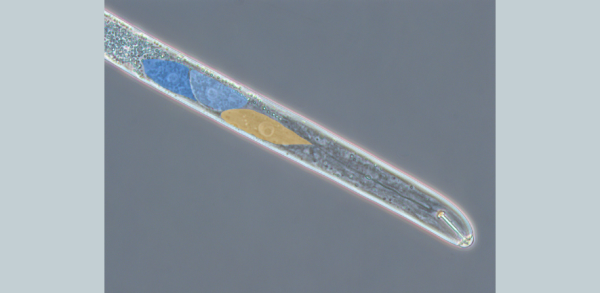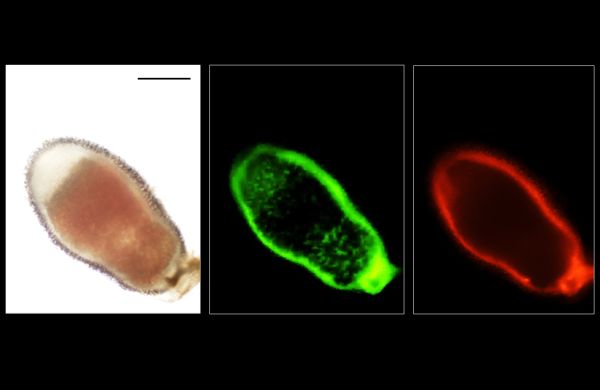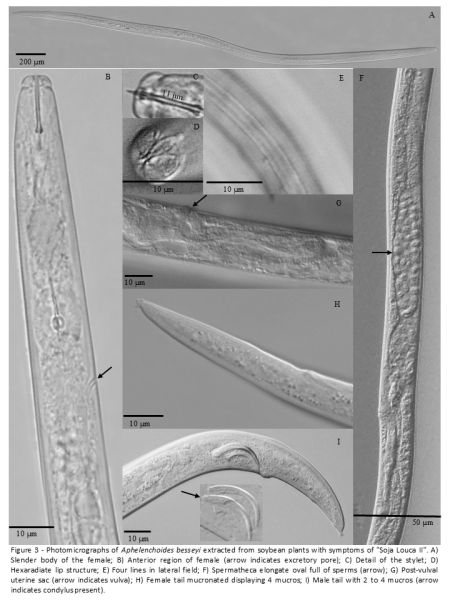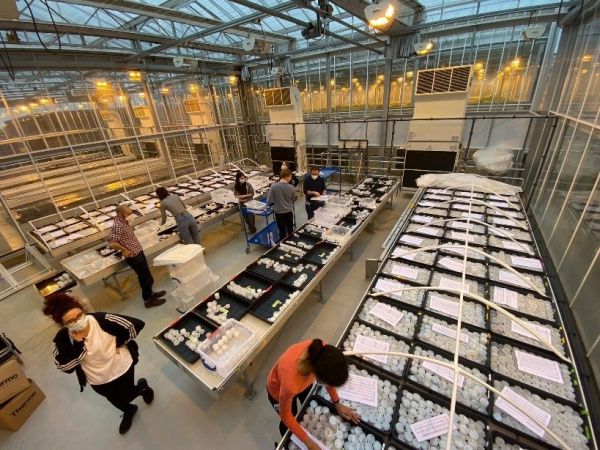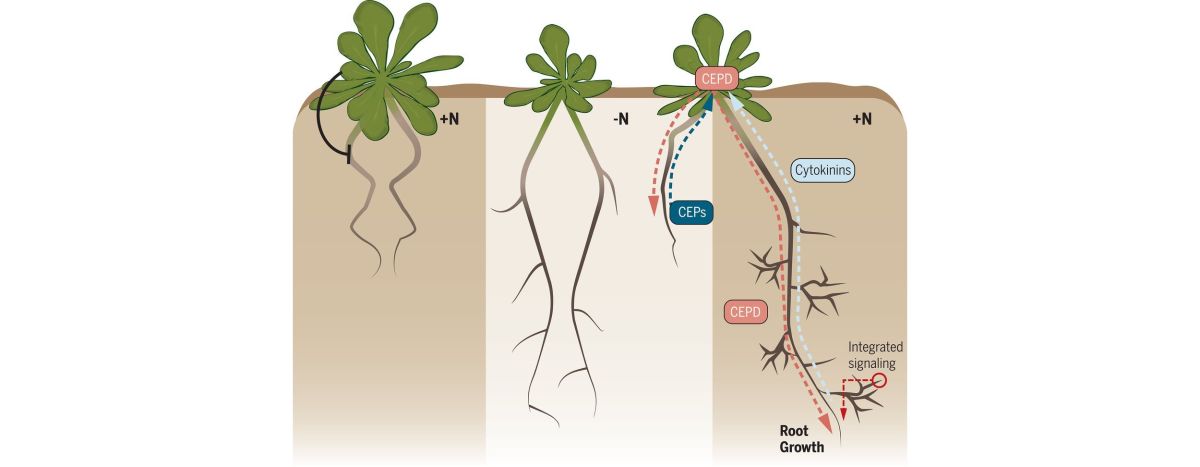
Image: N response and signaling. Root responses of Arabidopsis plants grown in uniform high N (NO3–; dark gray, left), uniform low N (light gray, middle), and differential treatments of high and low N (right). Note how the root responses are opposite to the local treatments in uniform versus differential treatments. Underpinning these responses are C-terminally encoded peptides (CEPs) produced in roots experiencing low N, cytokinins produced in roots experiencing high N, and an N-sufficiency signal in the shoot. All regulate shoot-to-root signaling, which involves CEP DOWNSTREAM 1 (CEPD) peptides. Systemic signaling is integrated with local signaling (indicated by red) that is induced by local perception of NO3–.
Giles Oldroyd and Ottoline Leyser’s review on nutrient sensing in the root and systemic signalling in the shoot to respond to changeable nutrient availability. Their article provides a detailed overview of the current knowledge about how plants engage with their nutrients and provides ideas about future research directions to help us use this knowledge to increase crop plant performance in low-fertility soils and wean global agriculture from its dependency on inorganic fertilisers.
Read the review: https://science.sciencemag.org/content/368/6486/eaba0196

